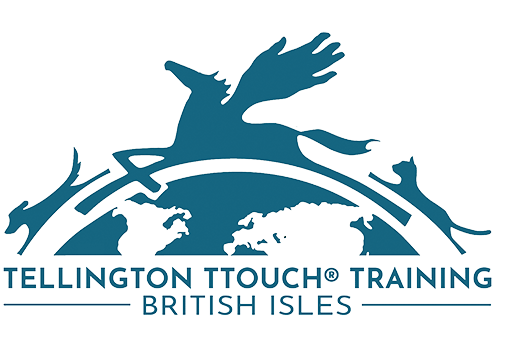TTouch for Other Species
One of the many unique attributes of TTouch is that it can be used on all species. The TTouches help to reduce stress, fear and timidity and promotes calmness, self-confidence and relaxation in both the animal and the handler. By offering an alternative to dominant and forceful handling techniques, TTouch can be used on a wide variety animals including rabbits, other small furries, birds, reptiles, wildlife and exotic species to minimize the stress of human contact in rescue, veterinary care and rehabilitation as well as giving handlers and owners valuable tools to help create a unique partnership with the animal in their care whether it be a snake, a tortoise, an owl, a parrot or a bearded dragon. TTouch techniques are invaluable for animals where previous inappropriate handling or lack of socialisation has resulted in defensive reactions towards people or other animals.
TTouch can enable an animal to move beyond its instinctive responses. By using simple steps to help animals overcome habitual or learned responses to human contact, the majority of animals respond quickly to this unique approach. This is especially helpful in a veterinary practice.
TTouch In Rehabilitation
Where contact with humans needs to be minimal and as stress free as possible some of the simple body TTouches such as Ear Work can be used while the animal is receiving veterinary care.
TTouch does not create an unwanted dependency on human contact. In cases where human contact must be kept to a minimum to ensure successful rehabilitation, the TTouches and techniques are used to reduce stress and shock in the sick or injured animal to enable appropriate human interaction to take place without causing further distress.
TTouch Tools
A variety of tools can be used to initiate contact with the animal. Great emphasis is placed on approaching the animal with care and respect to allow it to become accustomed to human contact in small stages. By working with a step-by-step approach, TTouch allows an animal to think through each process so that it can learn to trust not only the human but also its own ability to communicate. Simply forcing contact on an animal causes stress, encourages the animal to ‘shut down’ and can exacerbate the defensive cycle of behaviour.
Animals respond well to a variety of different textures. Paintbrushes, wands (stiff dressage whips) and feathers have been used successfully in many situations to initiate contact with the animal. They enable the handler to approach the animal without overcrowding and without using the hand which can cause alarm and concern for the animal. Stroking and the circular TTouches can all be done with the tools.
Body Work
Once the animal has settled and can be touched all over with the feather and/or paintbrush etc, TTouches can be done with the back of the hand or the back of the finger. There is less heat in the back of the hand and this approach is therefore less threatening to the animal. In the case of birds, the risk of removing oil from the feathers is reduced when using the back of the hand. Using the back of the hand or the back of the finger also enables the handler to develop a lighter touch as it reduces the chances of prodding or pushing down on the animal. TTouches with the fingertips and/or flat hand can then be used.
TTouch is not just confined to the animal that is shy of contact. It has far-reaching health benefits and can be used alone or with appropriate veterinary care to overcome a variety of problems. Many veterinary surgeons, veterinary nurses, zoo keepers, animal handlers, carers and trainers use TTouch to enhance an overall sense of health and wellbeing in the animals in their care. It may take several sessions to reach this stage. Short sessions over a period of time are preferable to one long session and it is often in the time out period that the animal makes the most change. There can be nothing more rewarding than helping an animal overcome its fear of human contact. With TTouch the impossible can become possible.
